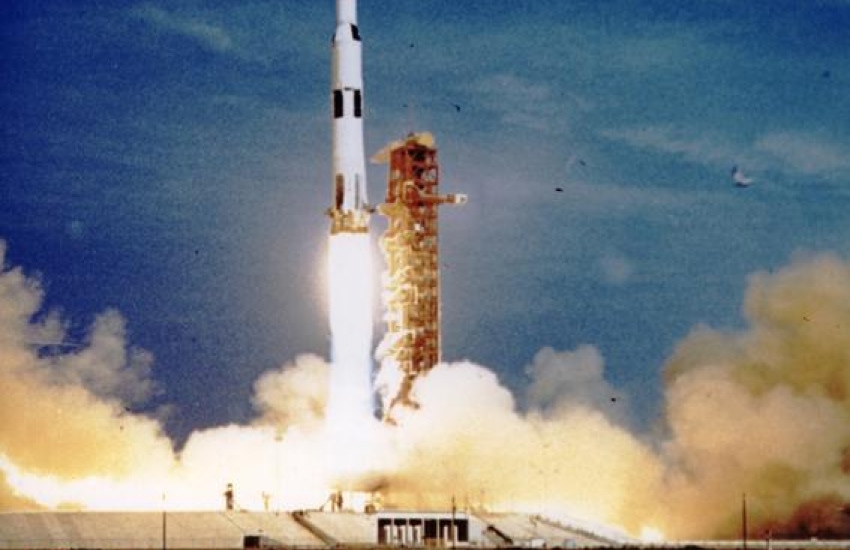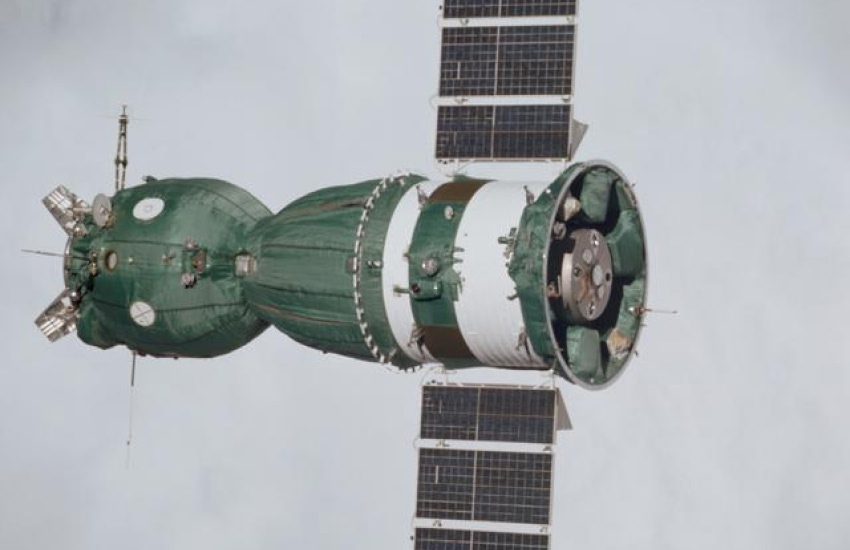Did you know that more than 70 countries have space programs, but only a handful have the capability to send astronauts or land probes to other celestial bodies? From the Cold War rivalry between the United States and the Soviet Union to the modern-day competition involving China, India, and private space companies, the space race is livelier than ever and has evolved into a complex, multi-nation endeavor.
As technology advances, space exploration is no longer just about national pride – it’s about scientific discovery, commercial opportunity, and even survival. Keep reading as we explore the key players in modern spacefaring, their achievements, and what the future holds for humanity’s presence beyond Earth.
Understanding the Space Race: Then & Now

The term “space race” was first coined during the Cold War era, describing the intense competition between the United States and the Soviet Union in their pursuit of space exploration. The race to space officially began with the launch of Sputnik 1, the first artificial satellite, on October 4, 1957. This cornerstone marked the dawn of human presence in space and is considered the “starting point” of the space race, which continues to this day.
This was followed by a series of remarkable achievements in space, including the first human space missions as well as lunar missions. Today, the 21st-century space race is no longer limited to these two nations but has expanded to multiple countries and even private enterprises, making space exploration a truly global endeavor.
As Frank Borman, an aeronautical engineer and NASA astronaut, famously put it: “Exploration is really the essence of the human spirit.” In many ways, this perfectly answers why nations are striving to push beyond Earth’s boundaries – because exploration and progress are part of our very nature.
What Makes a Nation Spacefaring?
A spacefaring nation is one that possesses the capability to develop, launch, and operate spacecraft beyond Earth’s atmosphere. This includes the ability to deploy space objects into orbit, such as satellites, manned missions, and interplanetary probes, into outer space using their own launch vehicles.
Being spacefaring also entails a sustained commitment to space activities, including research, innovation, and infrastructure development. Nations that invest in space exploration spending and maintain a presence in international collaborations, such as the International Space Station (ISS), solidify their position in the space sector.
Without a universally accepted and standardized classification system in this field, distinguishing between an established space power, a spacefaring nation, and an emerging player in space exploration remains challenging. However, we will carefully assess the landscape to put things into a clearer perspective.
Which Countries Are Spacefaring?
Almost every country in the world is a “space-faring” nation in the sense that they use satellites for communications, weather forecasting, and navigation. However, in terms of independent space access and technological capability, only a select few currently meet the criteria of true spacefaring nations. These are the countries that can develop and launch their own space objects using indigenous launch vehicles, engage in sustained space activities, and contribute significantly to the global space sector.
Leading Countries in Space Exploration
Today, a select group of nations dominates the landscape with their technological advancements, ambitious missions, and significant investments. These countries have established themselves as leaders in the space sector, pushing the boundaries of scientific discovery and human capability.
Below, we take a closer look at the nations that are shaping the future of space exploration.
-
The United States
The United States has been at the forefront of space exploration since the early days of American military history-linked space shuttles and NASA’s Apollo missions. The U.S. was the first nation to land humans on the Moon in 1969, an unparalleled off-Earth achievement and a successful mission that made history.
Today, NASA continues to lead with projects like the Artemis program, aimed at returning astronauts to the Moon. Additionally, America’s private sector plays a crucial role, with companies like SpaceX, Blue Origin, and Boeing contributing to space exploration through cutting-edge technology and ambitious missions, such as Mars colonization plans.
-
Russia (Formerly the Soviet Union)

The legacy of the robust Soviet space program remains strong in modern-day Russia. The Soviet Union was the first to send a human, Yuri Gagarin, into outer space in Vostok 1 on April 12th, 1961, and played a crucial role in pioneering space technology. The Soviet military also integrated space technology for strategic purposes.
Today, Russia operates the Soyuz programme (the longest operational human spacecraft programme), which has been essential for ferrying astronauts to the International Space Station (ISS). Russia remains a major player among the countries involved in space exploration, launching artificial satellites and planning new lunar probes and interplanetary probes.
1. China
China has rapidly emerged as a dominant force in the race to space. Through its China National Space Administration (CNSA), the country has achieved remarkable milestones, including a successful crewed mission to the Tiangong space station and the Chang’e lunar probes that explored the far side of the Moon.
China is also investing heavily in Mars exploration, with its Tianwen-1 rover successfully landing on the Red Planet’s Utopia Planitia region in 2021. With its growing space exploration spending, China is positioned to rival both the U.S. and Russia in their activity in space.
2. The European Space Agency (ESA)
Representing multiple European nations, the ESA is a significant player in space exploration. It collaborates with NASA, Russia, and other agencies on projects such as the ExoMars mission and the upcoming Lunar Gateway.
ESA has also been a leader in satellite technology, launching numerous artificial satellites and interplanetary probes for scientific research. Although individual European countries do not operate independent crewed missions, their collective contributions place them among the leading countries in space exploration.
3. Japan
Japan, through JAXA (Japan Aerospace Exploration Agency), has been an active player in space activities. It’s Hayabusa missions successfully retrieved samples from asteroids, and it continues to collaborate with the International Space Station (ISS). Japan’s recent plans include participating in lunar exploration alongside NASA’s Artemis program, positioning it as one of the key nations involved in the space race.
4. India
India’s space ambitions have skyrocketed in recent years, with the Indian Space Research Organisation (ISRO) making headlines with cost-effective and innovative missions. Their Chandrayaan program has successfully launched lunar probes, and the Mars Orbiter Mission (Mangalyaan) made India the first country to reach Mars on its first attempt.
India’s growing presence in outer space efforts demonstrates its commitment to expanding its space sector through significant advancements.
Other Emerging Spacefaring Nations
In recent years, both long-standing space powers and emerging nations have ramped up their involvement in space exploration, accompanied by the creation of new space agencies, as governments recognize the strategic and economic value of space activities.
In just the past five years, over ten nations have launched their own national space agencies, marking an exciting shift toward global participation in the expanding space sector. Several other noteworthy countries are making strides in space-related efforts, such as:
- United Arab Emirates (UAE): In 2014, the UAE, a country that successfully launched the Hope probe to Mars, established its Space Agency to oversee and strengthen its growing space sector, alongside MBRSC in 2015. The nation has since expanded its capabilities in telecommunications, Earth observation, and space exploration, demonstrating its rising influence in the global space arena.
- South Korea: In 2019, KARI unveiled Future Vision 2050, a long-term roadmap outlining 19 strategic goals to drive advancements in four key areas of South Korea’s space sector over the next 30 years. This ambitious plan highlights the nation’s commitment to expanding its presence in space, reinforcing its status as an emerging force in the global space race.
- Australia: After decades of missed opportunities, Australia has recently shifted its focus to space, primarily in areas where it holds a competitive edge, such as communications, space situational awareness (SSA), positioning, navigation, timing (PNT), and Earth observation data services. Embracing the rise of New Space, the country is actively working to expand its space economy and strengthen its position in the global space sector.
If you’re interested in the promising contenders for space exploration, you can read a full report by the European Space Policy Institute (ESPI) on emerging spacefaring nations for an in-depth dive.
Among These, Which Country Is Leading in Space Exploration?
The United States remains the dominant force, largely due to its extensive investments, groundbreaking research, and leadership in international collaborations. However, China’s rapid advancements and Russia’s enduring expertise ensure a competitive landscape. The rise of the private sector further complicates the traditional notion of national dominance as companies like Elon Musk’s SpaceX revolutionize access to outer space.
Space Resources: The Next Frontier of Competition?
As spacefaring nations push further into the cosmos, resource availability is becoming a major factor in mission planning – and a potential source of geopolitical tension. The Moon, for example, is not just a stepping stone for exploration but a valuable resource hub. Water ice, primarily found in permanently shadowed craters at the lunar south pole, is essential for sustaining human presence and can be converted into rocket fuel. It also provides a potential avenue for other critical materials like rare earth elements and helium-3.
This explains why multiple nations, including the U.S., China, and India, are targeting the lunar south pole for upcoming missions and potential bases. Could space resources cause future conflict between spacefaring nations? The current absence of clear international guidelines for resource ownership in space further complicates matters.
As competition for these prime locations intensifies, the quest for mining space resources might not only propel scientific and commercial breakthroughs but also create a new arena of global rivalry over who gets to reap the benefits of these off-world treasures, shaping the next chapters of the space race.
The Future of the Space Race Looks Bright
The 21st-century space race is no longer a two-player game but a multi-nation endeavor driven by geopolitical ambitions, technological advancements, and private enterprise. As countries continue increasing their space exploration spending, the future will see even greater collaboration, innovation, and competition.
Whether driven by scientific discovery, national ambition, or the promise of economic opportunity, the bustling activities in space are set to expand dramatically in the upcoming years, marking a new era in humanity’s journey beyond Earth. We are witnessing history unfold in real-time.
Space exploration is not just born out of curiosity, but is essential for human progress. As we stand on the edge of this cosmic revolution, the question is no longer if we will go further but how far we will be able to go. We’ll leave this with the words of Konstantin Tsiolkovsky, a Russian rocket scientist and visionary of space travel, which we think perfectly captures the sentiment behind the space race:
“Earth is the cradle of humanity, but one cannot remain in the cradle forever.“